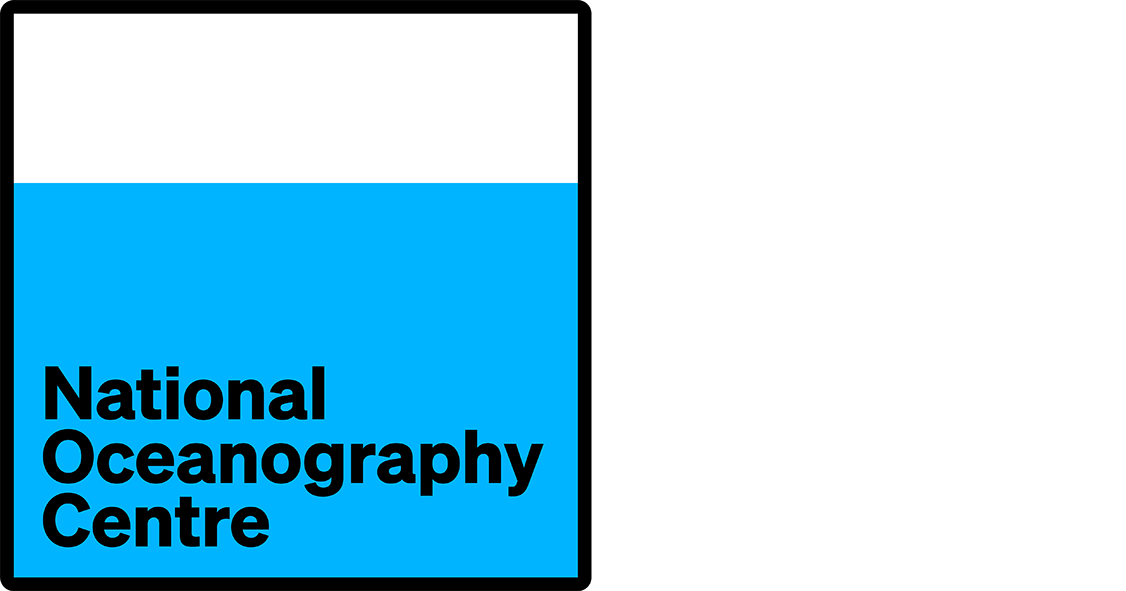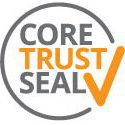Metadata Report for BODC Series Reference Number 920625
Metadata Summary
Problem Reports
Data Access Policy
Narrative Documents
Project Information
Data Activity or Cruise Information
Fixed Station Information
BODC Quality Flags
SeaDataNet Quality Flags
Metadata Summary
Data Description |
|||||||||||||||||||||||||||||||||
|
|||||||||||||||||||||||||||||||||
Data Identifiers |
|||||||||||||||||||||||||||||||||
|
|||||||||||||||||||||||||||||||||
Time Co-ordinates(UT) |
|||||||||||||||||||||||||||||||||
|
|||||||||||||||||||||||||||||||||
Spatial Co-ordinates | |||||||||||||||||||||||||||||||||
|
|||||||||||||||||||||||||||||||||
Parameters |
|||||||||||||||||||||||||||||||||
|
|||||||||||||||||||||||||||||||||
|
|||||||||||||||||||||||||||||||||
Problem Reports
No Problem Report Found in the Database
Data Access Policy
Public domain data
These data have no specific confidentiality restrictions for users. However, users must acknowledge data sources as it is not ethical to publish data without proper attribution. Any publication or other output resulting from usage of the data should include an acknowledgment.
The recommended acknowledgment is
"This study uses data from the data source/organisation/programme, provided by the British Oceanographic Data Centre and funded by the funding body."
Narrative Documents
Neil Brown MK3 CTD
The Neil Brown MK3 conductivity-temperature-depth (CTD) profiler consists of an integral unit containing pressure, temperature and conductivity sensors with an optional dissolved oxygen sensor in a pressure-hardened casing. The most widely used variant in the 1980s and 1990s was the MK3B. An upgrade to this, the MK3C, was developed to meet the requirements of the WOCE project.
The MK3C includes a low hysteresis, titanium strain gauge pressure transducer. The transducer temperature is measured separately, allowing correction for the effects of temperature on pressure measurements. The MK3C conductivity cell features a free flow, internal field design that eliminates ducted pumping and is not affected by external metallic objects such as guard cages and external sensors.
Additional optional sensors include pH and a pressure-temperature fluorometer. The instrument is no longer in production, but is supported (repair and calibration) by General Oceanics.
Specifications
These specification apply to the MK3C version.
| Pressure | Temperature | Conductivity | |
| Range | 6500 m 3200 m (optional) | -3 to 32°C | 1 to 6.5 S cm-1 |
| Accuracy | 0.0015% FS 0.03% FS < 1 msec | 0.0005°C 0.003°C < 30 msec | 0.0001 S cm-1 0.0003 S cm-1 < 30 msec |
Further details can be found in the specification sheet.
SeaTech Transmissometer
Introduction
The transmissometer is designed to accurately measure the the amount of light transmitted by a modulated Light Emitting Diode (LED) through a fixed-length in-situ water column to a synchronous detector.
Specifications
- Water path length: 5 cm (for use in turbid waters) to 1 m (for use in clear ocean waters).
- Beam diameter: 15 mm
- Transmitted beam collimation: <3 milliradians
- Receiver acceptance angle (in water): <18 milliradians
- Light source wavelength: usually (but not exclusively) 660 nm (red light)
Notes
The instrument can be interfaced to Aanderaa RCM7 current meters. This is achieved by fitting the transmissometer in a slot cut into a customized RCM4-type vane.
A red LED (660 nm) is used for general applications looking at water column sediment load. However, green or blue LEDs can be fitted for specilised optics applications. The light source used is identified by the BODC parameter code.
Further details can be found in the manufacturer's Manual.
FS Poseidon 200_7 CTD Data Documentation
Instrumentation
The CTD profiles were taken with a Neil Brown CTD, probably a Mk3, incorporating a pressure sensor, conductivity cell and platinum resistance thermometer. On most of the casts a SeaTech red light (661 nm) 25 cm path length transmissometer was fitted to the CTD package. The CTD unit was mounted vertically in the centre of a protective cage and the rig was fitted with a rosette sampler equipped with 12 Niskin bottles.
Data Acquisition and IfM Data Processing
The data were logged at 16 Hz on a PC running the standard EG&G data acquisition software. The downcasts were processed by the marine physics group at IfM Kiel and the calibrated data were transferred as ASCII files to BODC. The data have been worked up by an experienced team and are therefore believed to be of good quality.
BODC Processing, Screening and Calibration
Reformatting
The data in ASCII format were then transferred to the BODC internal format (PXF). This allowed the data to be quality assured using in-house software tools, notably the workstation graphics editor.
Editing
Using a custom in-house graphics editor, the limits of the downcasts were manually delimited and any spikes flagged suspect.
Once screened, the CTD downcasts were loaded into the OMEX database under the Oracle relational database management system.
During screening a salinity offset of -0.028 was observed on cast 486 between 1931 and 1959 decibars. This was corrected by applying a manual edit once the data had been loaded into the database.
Calibration
Pressure
The pressure offset was determined by looking at the pressures recorded when the CTD was clearly logging in air (readily apparent from salinity). The following corrections were determined and have been applied to the data:
| Cast Nos | Correction |
|---|---|
| 458, 461, 462, 465, 471, 473, 475, 486, 487, 488, 489, 490, 491, 492 | Pcorrected = Pobserved - 0.73 |
| 459, 467, 469, 477, 480, 482, 484, | Pcorrected = Pobserved - 0.60 |
| 481 | Pcorrected = Pobserved - 0.50 |
Salinity and temperature
The CTD data were accompanied by log sheets containing digital reversing thermometer data. These showed excellent agreement with the CTD temperatures inspiring confidence in the CTD temperature calibration. Therefore no adjustments have been made to the data by BODC.
The log sheets included the bottle references for the salinity samples but not the salinometer determinations. Subsequent attempts to obtain these data failed and consequently it was not possible to check out the salinity calibration. However, the T/S curves from the deep OMEX 3 station show excellent agreement with other cruises known to be of good quality.
Attenuance
Consideration of the clear water values from the transmissometer data showed that the instrument had problems. On cast 458 the instrument failed part way down and on the next few casts the clear water data were below pure water values. Between cast 465 and 471, the clear water data values suddenly increased by over 0.1 per m. Subsequent values were relatively stable until the instrument was removed after cast 486.
The following corrections, determined by normalising the clear water attenuance to 0.35, have been applied to the data to correct for the problems described above:
| Cast No. | Correction |
|---|---|
| 458 | None |
| 459 | +0.085 |
| 461 | +0.087 |
| 462 | +0.080 |
| 465 | +0.088 |
| 467 | No data |
| 469 | No data |
| 471 | -0.050 |
| 475 | -0.040 |
| 477 | No data |
| 480 | -0.040 |
| 481 | -0.050 |
| 482 | -0.045 |
| 484 | -0.045 |
| 486 | -0.050 |
Please note that as a result of this procedure proving necessary, these data should not be used for purposes where accurate intercomparison between profiles is required.
Project Information
Ocean Margin EXchange (OMEX) I
Introduction
OMEX was a European multidisciplinary oceanographic research project that studied and quantified the exchange processes of carbon and associated elements between the continental shelf of western Europe and the open Atlantic Ocean. The project ran in two phases known as OMEX I (1993-1996) and OMEX II - II (1997-2000), with a bridging phase OMEX II - I (1996-1997). The project was supported by the European Union under the second and third phases of its MArine Science and Technology Programme (MAST) through contracts MAS2-CT93-0069 and MAS3-CT97-0076. It was led by Professor Roland Wollast from Université Libre de Bruxelles, Belgium and involved more than 100 scientists from 10 European countries.
Scientific Objectives
The aim of the Ocean Margin EXchange (OMEX) project was to gain a better understanding of the physical, chemical and biological processes occurring at the ocean margins in order to quantify fluxes of energy and matter (carbon, nutrients and other trace elements) across this boundary. The research culminated in the development of quantitative budgets for the areas studied using an approach based on both field measurements and modeling.
OMEX I (1993-1996)
The first phase of OMEX was divided into sub-projects by discipline:
- Physics
- Biogeochemical Cycles
- Biological Processes
- Benthic Processes
- Carbon Cycling and Biogases
This emphasises the multidisciplinary nature of the research.
The project fieldwork focussed on the region of the European Margin adjacent to the Goban Spur (off the coast of Brittany) and the shelf break off Tromsø, Norway. However, there was also data collected off the Iberian Margin and to the west of Ireland. In all a total of 57 research cruises (excluding 295 Continuous Plankton Recorder tows) were involved in the collection of OMEX I data.
Data Availability
Field data collected during OMEX I have been published by BODC as a CD-ROM product, entitled:
- OMEX I Project Data Set (two discs)
Further descriptions of this product and order forms may be found on the BODC web site.
The data are also held in BODC's databases and subsets may be obtained by request from BODC.
Data Activity or Cruise Information
Cruise
| Cruise Name | PO200_7 |
| Departure Date | 1993-06-23 |
| Arrival Date | 1993-07-04 |
| Principal Scientist(s) | Bodo von Bodungen (Leibniz Institute for Baltic Sea Research, Warnemuende) |
| Ship | Poseidon |
Complete Cruise Metadata Report is available here
Fixed Station Information
No Fixed Station Information held for the Series
BODC Quality Control Flags
The following single character qualifying flags may be associated with one or more individual parameters with a data cycle:
| Flag | Description |
|---|---|
| Blank | Unqualified |
| < | Below detection limit |
| > | In excess of quoted value |
| A | Taxonomic flag for affinis (aff.) |
| B | Beginning of CTD Down/Up Cast |
| C | Taxonomic flag for confer (cf.) |
| D | Thermometric depth |
| E | End of CTD Down/Up Cast |
| G | Non-taxonomic biological characteristic uncertainty |
| H | Extrapolated value |
| I | Taxonomic flag for single species (sp.) |
| K | Improbable value - unknown quality control source |
| L | Improbable value - originator's quality control |
| M | Improbable value - BODC quality control |
| N | Null value |
| O | Improbable value - user quality control |
| P | Trace/calm |
| Q | Indeterminate |
| R | Replacement value |
| S | Estimated value |
| T | Interpolated value |
| U | Uncalibrated |
| W | Control value |
| X | Excessive difference |
SeaDataNet Quality Control Flags
The following single character qualifying flags may be associated with one or more individual parameters with a data cycle:
| Flag | Description |
|---|---|
| 0 | no quality control |
| 1 | good value |
| 2 | probably good value |
| 3 | probably bad value |
| 4 | bad value |
| 5 | changed value |
| 6 | value below detection |
| 7 | value in excess |
| 8 | interpolated value |
| 9 | missing value |
| A | value phenomenon uncertain |
| B | nominal value |
| Q | value below limit of quantification |


